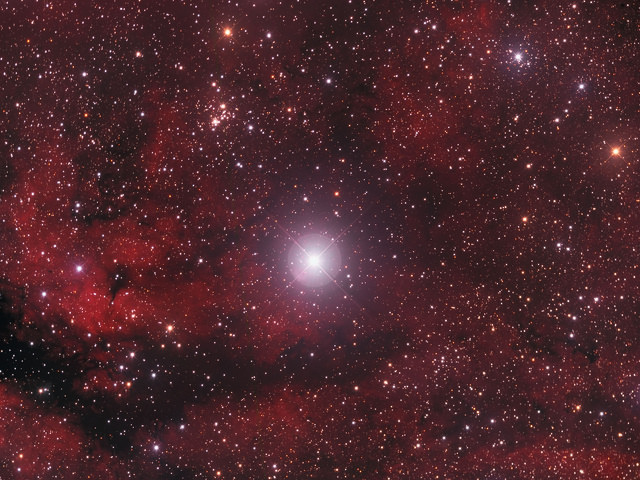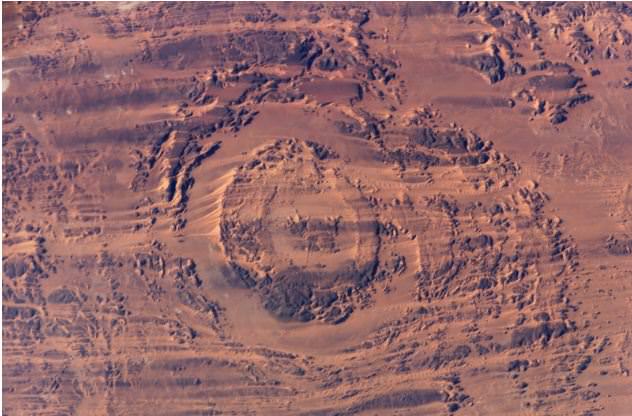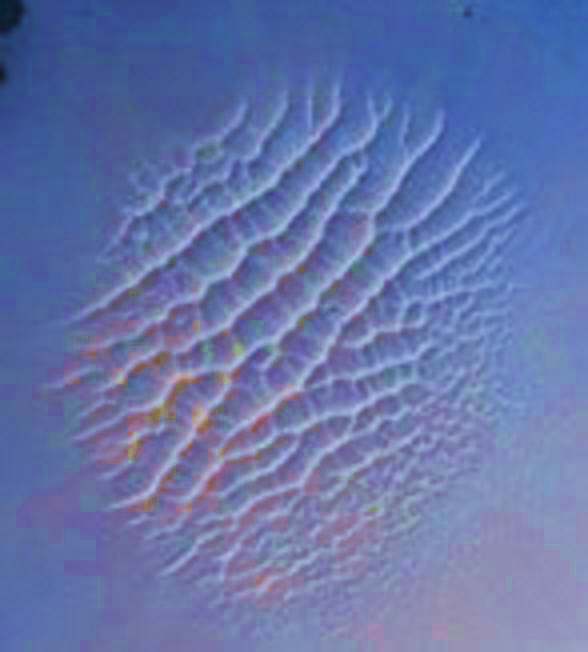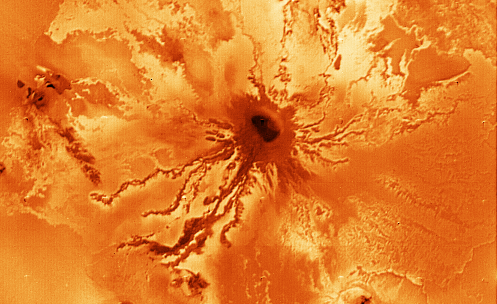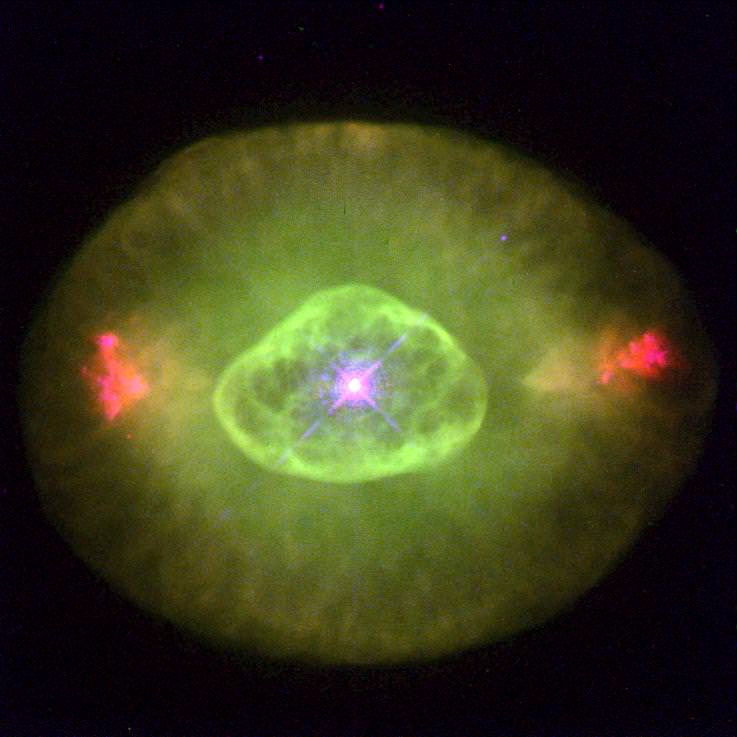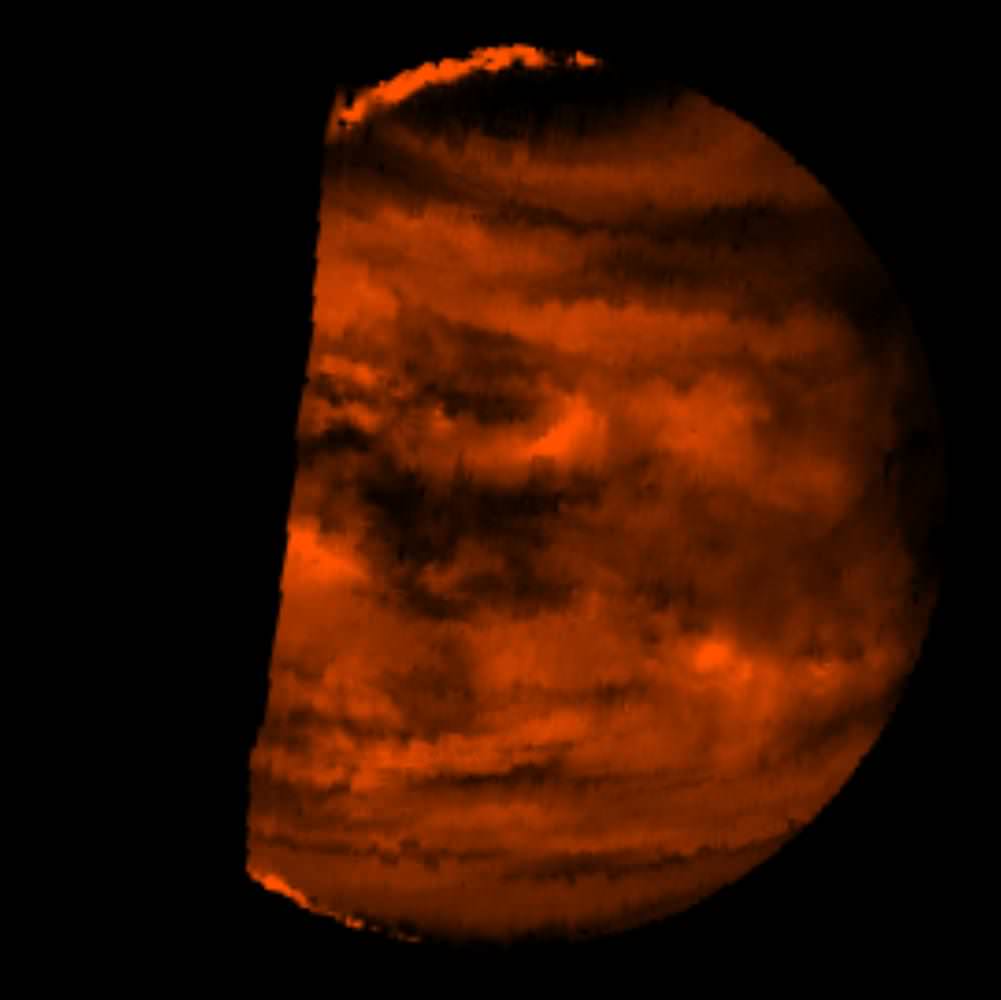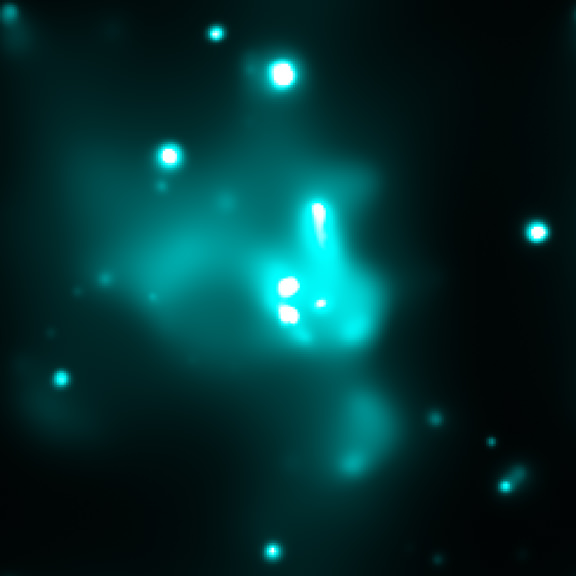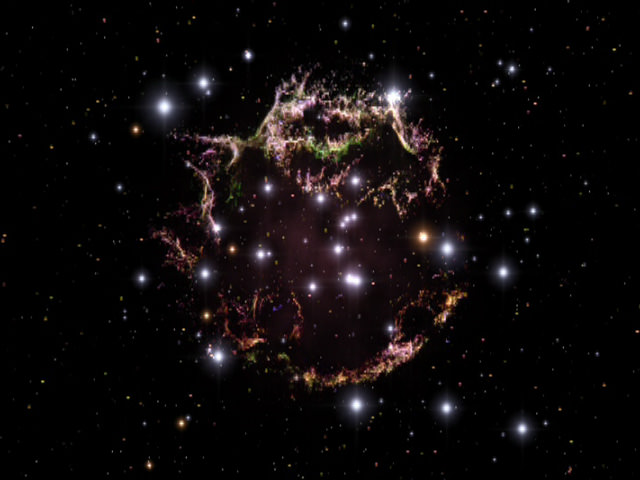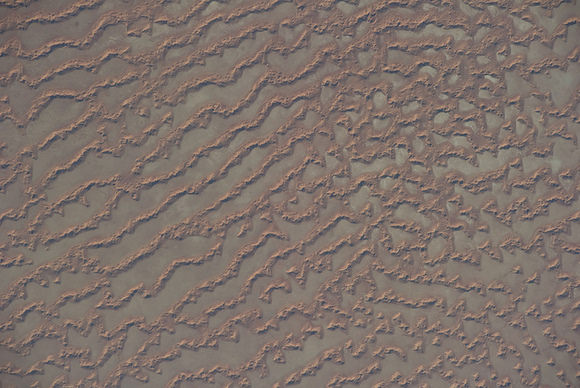With the return of the Where In The Universe Challenge, we also have the return of the answer, as promised. You can now find out the what and where of this image, back on the original post Thanks to everyone who answered and also to César Cantú of the Chilidog Observatory in Monterrey, Mexico for supplying the image for this week’s WITU Challenge. Check back again next week for more!
“Where In The Universe Challenge” Returns!
It’s back! After a long hiatus, we’re bringing back our weekly test of your visual knowledge of the cosmos, the Where In The Universe (WITU) Challenge. If you’re new to UT, or in case you’ve forgotten, here’s the drill: take a look at this image and see if you can determine where in the Universe this image depicts. Post your guesses in the comments section, and check back on later at this same post to find the answer. To make this challenge fun for everyone, please don’t include links or extensive explanations with your answer. Good luck!
Also, if you have ideas for future WITU Challenges, send them to Nancy.
UPDATE: The answer has now been posted, below:
This is Gamma Cygni, also known as SADR, and the image was taken by astrophotographer César Cantú. Gamma Cygni is a yellow giant star, about 65,000 times brighter than our Sun, and it shows up as the bright star in the center of the image. The Gamma Cygni nebula consists of the pink cloudy region which can be seen surrounding Gamma Cygni. However, Gamma Cygni is actually not part of this nebula; it is a foreground star located half way between us and the nebula. The image looks deep into the Orion Arm of our the Milky Way Galaxy, and the nebula is more than 3,000 light years from us.
For this image, César used his Takahashi 180ED Epsilon Telescope and FLI 8300 camera, both on an Orion Atlas EQ mount. See a larger version and more info on his website.
Thanks to César for sharing his image of Gamma Cygni! Check back next week for another test of your visual knowledge of the cosmos!
Where In The Universe Challenge #156
Here’s a new Where In The Universe Challenge, and this one was submitted by UT reader David Schumaker! Name where in the Universe this image depicts and give yourself extra points if you can name the telescope or spacecraft responsible for the image. Post your guesses in the comments section, and check back on later at this same post to find the answer. To make this challenge fun for everyone, please don’t include links or extensive explanations with your answer. Good luck!
UPDATE: The answer has now been posted below.
This image is of Earth, an impact crater in the Sahara Desert of northern Chad, from an asteroid or comet several that is hundred million years old. It was taken by astronauts from Expedition 12 on the International Space Station. The concentric ring structure is the Aorounga impact crater, with a diameter of about 17 kilometers (10.5 miles). The original crater was buried by sediments, which were then partially eroded to reveal the current ring-like appearance. The area shown is centered at approximately 19.1 degrees north latitude and 19.3 degrees east longitude.
Thanks again to David Schumaker for sending in this image, which he found here.
Where In The Universe Challenge #155
Here’s a new WITU Challenge! This image was sent in by UT reader Yüksel Kenaroglu. Take a look at this image and see if you can determine where in the universe this image is from; give yourself extra points if you can name the spacecraft/telescope responsible for the image. We’ll provide the image today, but won’t reveal the answer until tomorrow. This gives you a chance to mull over the image and provide your answer/guess in the comment section. Please, no links or extensive explanations of what you think this is — give everyone the chance to guess.
Thanks to Yüksel for the submission. Remember, we’ll take suggestions for future WITU’s — just send Nancy an email NOTE: Don’t send an email to answer the challenge, as several people have done. Provide your answer in the comment section, as stated in the instructions.
UPDATE: The answer has now been posted below.
As many suspected this is the inside of Victoria Crater on Mars, taken by the Mars Reconnaissance Orbiter. Below is the full original, color image, which includes notations for various features, including the Opportunity rover sitting along the rim of the crater.

Where In The Universe Challenge #154
It’s time for another Where In The Universe Challenge! This WITU was submitted by UT reader David Schumaker. Name where in the Universe this image was taken and give yourself extra points if you can name the telescope or spacecraft responsible for the image. Post your guesses in the comments section, and check back on later at this same post to find the answer. To make this challenge fun for everyone, please don’t include links or extensive explanations with your answer. Good luck!
UPDATE: The answer has now been posted below.
This is a closeup of a volcano named Ra Patera on Jupiter’s moon Io, taken by one of the Voyager spacecraft in 1979. Voyager 1 made a spectacular and unexpected discovery that Io, the innermost Galilean moon of Jupiter, was covered with volcanoes and some of them were erupting! Voyager 1 observed nine volcanic eruptions during its encounter with the moon, and four months later, when Voyager 2 flew past, it was able to confirm that at least six of them were still erupting.
See more about this image on APOD. Many thanks to David Schumaker for suggesting this image for WITU! Submit any ideas you have for future WITUs to Nancy.
Where In The Universe Challenge #153
Here’s a new WITU Challenge! Take a look at this image and see if you can determine where in the universe this image is from; give yourself extra points if you can name the spacecraft/telescope responsible for the image. We’ll provide the image today, but won’t reveal the answer until tomorrow. This gives you a chance to mull over the image and provide your answer/guess in the comment section. Please, no links or extensive explanations of what you think this is — give everyone the chance to guess.
Remember, we’ll take suggestions for future WITU’s — just send Nancy an email
UPDATE: The answer has now been posted below.
This eye-shaped object is the Planetary Nebula NGC 6826, and the image was taken by the Hubble Space Telescope on Jan. 27, 1996 with the Wide Field and Planetary Camera 2. NGC 6826 is 2,200 light- years away in the constellation Cygnus, and the hot remnant star in the center of the green oval is one of the brightest stars in any planetary nebula. See more about this image on the HubbleSite.
Where In The Universe Challenge #152
Here’s a new image for the Where In The Universe Challenge, to test your visual knowledge of the cosmos. You know what to do: take a look at this image and see if you can determine where in the universe this image is from; give yourself extra points if you can name the spacecraft/telescope responsible for the image. We’ll provide the image today, but won’t reveal the answer until later. This gives you a chance to mull over the image and provide your answer/guess in the comment section. Please, no links or extensive explanations of what you think this is — give everyone the chance to guess.
The answer for the previous WITU challenge can be found here.
UPDATE: The answer has been posted below.
This is a a near-infrared image of lower-level clouds on the night side of Venus, taken by the Galileo spacecraft’s Near Infrared Mapping Spectrometer, taken as the spacecraft flew by Venus on February 10, 1990, as it was wending its way towards Jupiter. You can learn more about his image at JPL’s Photojournal.
Where In the Universe #151
It’s back by popular demand! Here’s a new Where In The Universe Challenge. Name where in the Universe this image was taken depicts and give yourself extra points if you can name the telescope or spacecraft responsible for the image. Post your guesses in the comments section, and check back on later at this same post to find the answer. To make this challenge fun for everyone, please don’t include links or extensive explanations with your answer. Good luck!
UPDATE: The answer has now been posted below.
This is a Chandra image of four bright, variable X-ray sources that were discovered within 3 light years of Sagittarius A* (Sgr A*). The variability suggests these are X-ray binary systems where a black hole or neutron star is pulling matter from a nearby companion star. Such a high concentration of X-ray binaries in this region is strong circumstantial evidence that a dense swarm of 10,000 or more stellar-mass black holes and neutron stars has formed around Sgr A*.
Where In The Universe Challenge #150
It’s time for another Where In The Universe Challenge! Name where in the Universe this image was taken and give yourself extra points if you can name the telescope or spacecraft responsible for the image. Post your guesses in the comments section, and check back on later at this same post to find the answer. To make this challenge fun for everyone, please don’t include links or extensive explanations with your answer. Good luck!
And you can now find the answer to the previous WITU Challenge back at the original post.
UPDATE: The answer is now posted below!
This image was taken by the Hubble Space Telescope in December 2004, and it provides a detailed look at the tattered remains of a supernova explosion known as Cassiopeia A (Cas A). It is the youngest known remnant from a supernova explosion in the Milky Way. The image is a composite made from 18 separate images using Hubble’s Advanced Camera for Surveys (ACS). See this link on the HubbleSite for more info.
Where In The Universe Challenge #149
We’re back! Where In The Universe took a little vacation, and thanks to everyone who wrote in to say they missed their weekly WITU.
You remember what to do, right? Take a look at this image and see if you can determine where in the universe this image is from; give yourself extra points if you can name the spacecraft/telescope responsible for the image. We’ll provide the image today, but won’t reveal the answer until later. This gives you a chance to mull over the image and provide your answer/guess in the comment section. Please, no links or extensive explanations of what you think this is — give everyone the chance to guess.
Remember, we’ll take suggestions for future WITU’s — just send Nancy an email
UPDATE: The answer is now posted below.
We didn’t fool too many people that this was perhaps a HiRISE image from Mars. It actually is Ar Rub al Khali Sand Sea, in the Arabian Peninsula and it was photographed by an Expedition 27 crew member on the International Space Station. The Ar Rub al Khali, also known as the “Empty Quarter”, is a large region of sand dunes and interdune flats known as a sand sea (or erg).
You can see a larger version of it on the Marshall Space Flight Center Flickr page.

